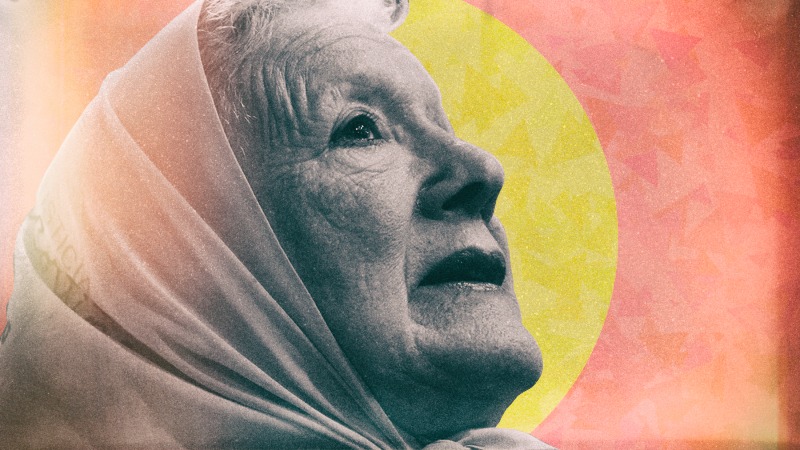
For several weeks we have shared calls, messages, relived anecdotes and reflected on the class struggle and the beginning of the last civic-military, business and ecclesiastical dictatorship in Argentina (1976 – 1983), which allowed us the series you seventies. Here we will try to synthesize some conclusions by way of closing the series, which we hope have contributed to answering some questions -and asking others-, on the long journey through recent history.
Throughout this note we will be linking all the interviews we conducted, in the order they were published.
Fascist gangs and Peronism
One of the first conclusions that emerged from listening to these “voices” was that the repression did not begin on March 24, 1976, but that it began at least since the end of 1973 with the actions of the fascist gangs (for -state) such as Triple A (Argentine Anti-Communist Alliance). These gangs were made up of leaders of the Federal Police and the union bureaucracy of the CGT. Expressions similar to the famous Triple A were the CNU (University Nationalist Concentration), the Organization Command (CDO) or the Libertadores de América Command.
Between November 1973 and March 1976 alone, the Triple A commandos assassinated between 1,500 and 2,000 worker, popular, intellectual, and youth activists and leaders. Its objective was to intimidate and assassinate the main leaders of the worker and student vanguard that was beginning to experience a break with a Peronist government in power, which was promoting a harsh adjustment known as the Social Pact. Even, it must be said, the Triple A was formed while Perón was alive, in the Ministry of Social Welfare directed by López Rega, a few meters from the Casa Rosada.
If we go back to the interview Carlos Morelli, a former worker at the Astarsa Shipyard, tells us that the day the coup was carried out, he had already resigned from his job because management had been taken over by the CNU and “management did not want me to resign because they obviously wanted to suck me in.” . It is worth clarifying that in the seventies jargon “suck” is equivalent to disappear.
For its part, the Independence Operation in Tucuman gave the military the green light to liquidate the guerrilla expressions and was a “general rehearsal” for what would later become the genocide that began in March 1976.
The path to the coup d’état was paved by a combination of the actions of parastatal gangs, the role of the union bureaucracy in containing as much as possible the “labor insurgency” that since the Cordobazo of 1969 had not stopped confronting the plans of adjustment and repression. On the other hand, the labor movement had acquired such combative characteristics that it managed to give phenomena such as “classism” to the political-union terrain and in the construction of (embryonic) organisms with double power such as the Inter-factory Coordinators in the Buenos Aires Metropolitan Area. Aires, which seriously challenged the traditional leadership of the unions and the capitalist order.
Political militancy: grassroots and class
The Argentine experience of “the 70s” in a broad sense was the daughter of a world boom where the revolution was the order of the day. From the Cuban Revolution of 1959, passing through the French May of 1968, the Revolution in Portugal in 1974, the experience of the Chilean Industrial Cordons aborted with the Pinochet dictatorship in 1973, accounted for a world dynamic of “revolution” and ” counterrevolution”. We can read the set of dictatorships in the South American cone as a counterrevolutionary response throughout the continent, known as the Condor Plan that was orchestrated by US imperialism.
Almost all the testimonies show that the 70s were really turbulent. Ana Campos highlights curfews for example, to intimidate, control and repress the civilian population. Rodolfo Marco highlights the combativeness of the working class in the inter-factory coordinators in the same area, La Matanza. Besides, “Swedish” He talked about that in those years the militant commitment was very high. While the testimony of Walter “the Duck” Moretti, It shows us that the climate of rebellion ran so deep among high school students that they managed to wrest the secondary ticket from Isabel’s government. But even some time after the day of the coup, March 24, 1976, which had among its most infamous episodes the “Night of the pencils” on September 16 of the same year; High school students, defying the dictatorship, continued to organize, militate, and fight clandestinely.
Between “internal exile” and “underground”
The impact of the dictatorship was not only felt in the physical disappearance of thousands of fighters. But also in the consequences that the issue of secrecy brought to our interviewees. Liliana Battistotti She tells us that in addition to having suffered the disappearance of her husband Luis Marcelo Panizza, a militant of the PRT-ERP like her, she also suffered “internal exile”, since she had to go live in another province where she did not know anyone. and couldn’t talk to anyone either. The same as Carlos Morelli, that she had to escape to Santa Fe and “wander” everywhere to survive.
Walking to other unknown latitudes of Argentina and wandering to survive in hiding; They were also part of the direct consequences in daily life that our interviewees suffered under State terrorism.
Biological impunity and impunity as a systemic strategy
when i talk to “Swedish”, we reflect on the death of Blaquier: an emblematic case that demonstrated the class character of the genocide, a blow against the working class. The survivor of hell from ESMA said that there are two types of impunity, biological, since many genocidal, businessmen, clergymen and civilians take all their secrets to the grave. And the other impunity is the non-opening of the dictatorship’s files, which would allow us to know not only the identity of all the appropriated boys and girls in the clandestine detention centers, but also the final destination of the 30,000 (or more) disappeared. About the same genocidal businessman Nora Cortiñas He told us that “he should have died in prison. It is a great injustice to die in his bed. In other words, like so many other thousands of civilians, priests and businessmen died with impunity.
About impunity then the question arises; the Argentine State, administered during 40 years of bourgeois democracy, by the alternation of Peronists and Radicals and their respective coalitions Is he capable of opening the files of the dictatorship at once? Because I would do? Is the Argentine capitalist State capable of questioning and exposing the crimes against humanity of its own backbone and foundation such as the Armed and repressive Forces?
We believe that the fundamental solution, although it cannot be exhausted in this reflection, enables us to think and debate that only a government of the working class and the poor peopleof breaking with capitalism and the direct beneficiaries of the last coup d’état orchestrated 47 years ago, can provide a comprehensive and effective solution to the problem of impunity.
The Serie you seventies sought to provide foundations based on the account of the experiences of our interviewees and interviewees. Let me tell you that I myself began to be a member of the PTS in 1997 “to fight against the impunity of genocide,” being part of a huge youth vanguard during those years of Menemism, impunity, and repression. Promoting the “Committees against repression and impunity”, of the nascent Center of Professionals for Human Rights (CeProDH) was how I met Myriam Bregman in a little school in Los Polvorines, my neighborhood, to repudiate the visit of Bill Clinton, the president of the United States. At that time, Peronism carried out an adjustment very similar to that of now and even spoke not only of “good relations” but also of “carnal relations” with the Yankees and our country, demonstrating all the submission to the masters of the north who promoted all the Dictatorships in Latin America in the 70s of the last century. In this same series, Nora Cortiñas said “If we stop paying the foreign debt in Argentina, hunger will end.” How right you are, that’s why since I started the military the fight against impunity has been nothing more than redoubling efforts in the path of liquidating exploitation and oppression.
Memory, truth and justice
Before concluding I would like to dedicate this entire series you seventies in memory of our recently deceased colleague, Jorge “Turkish” Sobrado. El Turco was not only part of the 1970s generation, but he was also missing for 373 days, first in the La Rivera Clandestine Detention Center and later in Penal Unit 1 in Córdoba, during the last dictatorship. Very recently, in Mar del Plata we met again and the talks were the same as always, the socialist revolution as a necessary horizon to end the hardships that this system offers.
We deeply appreciate the time that each of our interviewees have taken, in moments of harsh adjustment and where vast and unfathomable impunity continues to reign. It was exciting to listen to them, read them, corroborate data and dates, on a not easy trip to the past to bring it to this very complex present that Argentina and the world are experiencing and to prepare for the future. According to Rodolfo Walsh, they gave us their “testimony in difficult times” and that is a great act of rebellion. Rebellion from which the new generations will necessarily feed on the path of conquering a life that deserves to be lived, without oppression or exploitation.
30 thousand arrested – disappeared:
Presents! Now and always!
Source: www.laizquierdadiario.com

